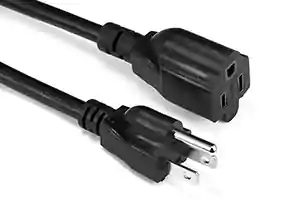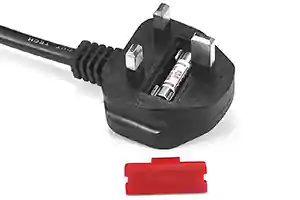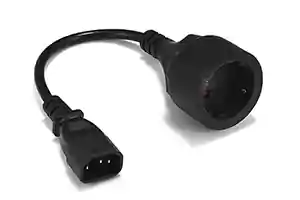タイプ E の電源プラグには 2 つの丸いピンがあります。 (直径4.8mm, 19mm離れた中心) そしてアースピン用の穴. タイプEプラグは丸型です, タイプEソケットには丸い凹みがあります. 主にフランスで使われています, ポーランド, スロバキア, ベルギー, チェコ, モロッコとチュニジア.

実はコンセントにも色々な種類があります. DCpowercord presents them to you in this article.
IECタイプGプラグアンドソケットとは
What are the different types of electrical outlets?
For your electrical appliances to work properly, they must connected to electrical circuits. This connection is possible thanks to electrical outlets.
Male and female plugs: 違いは何ですか?
A first distinction is necessary within the family of electrical outlets. There are male and female sockets.
Female sockets
They distribute or relay the electric current. It takes the form of a short metal rod. Materially, it consist of a wall base, insulating materials, two holes, と, sometimes, a protective conductor.
Male sockets
You will also find them under the name of “files”. They consist of an insulating material and two rods made of brass or nickel. They also consist of a hole which allows the male plug to fit into the female plug. The pressure conductor of the latter fits it in the hole of the male plug.
What sockets are used in France (Type E Socket)?
It is a terminology beginning with the letter A and ending with the letter N that allows distinguishing the different plugs used in the world. フランスで, we use type C, type E, and type F sockets.
Type C sockets
This model without grounding is the European standard. Two rods make up this type of socket. There are two “models,” depending on the power requirements of the appliance to be connected.
Thus, low-power devices require a CEE 7/16 type socket, while more power-hungry equipment will require CEE 7/17 type sockets.
Note that both types of outlets are compatible with E and F type electrical outlets.
Sockets type E and F
These models with a grounded plug are the other European standard. Some type E and type F wall outlets have a metal flap.
コンセント: surface-mounted or recessed?
Once the distinction between male and female sockets and C, E, and F type sockets has been made, another distinction can be made between surface-mounted and flush-mounted sockets. These exist for the different types of electrical outlets.
The protruding sockets
Since they are effortless to install, they are the preferred outlet when renovating or simply adding an outlet to an existing circuit. You don’t need to drill holes in your wall to install the outlet, nor do you need to drill holes in the wall to run the electrical wires.
Run the electric wires or cable through a conduit (this is an exposed conduit). The socket box is then hung directly on the wall. The connection is made in the housing.
Surface-mounted outlets comply with the NF C 15-100 standard for electrical safety.
Recessed sockets
The advantage of flush-mounted outlets is that they are entirely “hidden” in the wall. They, 全国電気製造業者組織, offer a more significant aesthetic advantage than surface-mounted outlets.
That said, expect the work to be a little longer and more “complicated.” それはそう, it will be necessary to make grooves in the support, ensure the passage of sheaths and electrical wires, proceed with the sealing, fill in the gaps, probably redo the paint or the wallpaper, 等.
If you are buying a new home, you should know that you will only have built-in outlets. It is inside a single box that all connections are made. The outlet’s plate is also supported by this box. This plate is the only visible element of a flush-mounted socket.
Recessed outlets also meet the guidelines of the NF C 15-100 standard in terms of electrical safety, provided that they are properly installed.
コンセント: interior or exterior?
An electrical outlet will not guarantee similar protection depending on whether it is used indoors or outdoors (protection against shocks, water, dust, accidental contact, 等).
The indoor electrical outlet
Inside your home, electrical outlets are a definite source of danger. This is why the NF C 15-100 standard now requires childproofing.
You may have noticed that the boxes and plates of your outlets are made of plastic. This significantly reduces the risk of shocks, mechanical dangers, or crushing.
There is no standard that requires the installation of waterproof outlets in a home. もちろん, in the bathroom, you will have to follow the regulations in force for water rooms. It will protect you against the risks of splashing or projections.
Keep in mind that if you add an outlet in your bathroom, it must be fixed at more than 60 cm from your shower or bathtub. You will also need to install a 30mA ground fault circuit interrupter. ついに, the grounding conductor of your home must be connected to all visible metal parts.
Regarding the installation of electrical outlets elsewhere in your home, they must be installed at least 5 cm from the ground. Their intensity is 16 A. For special sockets, such as oven sockets, it is recommended to install them at least 12 cm from the floor.
Note that electrical outlets always have a protective device, such as a fuse or circuit breaker.
The outdoor electrical outlet
The exterior electrical outlet should be installed at least 1m from the ground. It must have an IP protection rating of at least 25.
Most often, for obvious safety reasons, you will see removable flaps on this type of outlet. There will also be seals to prevent dust and water from entering the housing.
The protection rating here is 55. This offers the best guarantees against dust and water projections.
To protect against the mechanical risks mentioned above, you can use electrical outlets with metal housing. They have an IP rating of 66 また 67.
Don’t forget to connect this external socket to the ground!
Other types of electrical outlets
When we talk about electrical outlets, we always think of the socket that brings us the electric current. But there are also other types of electrical outlets.
The audio/video outlet allows you to connect a television, a projector, or speakers.
The programmer has a clock that allows you to program the hours of power supply and the hours of cut-off for the different equipment in the house.
The USB plug allows you to recharge the battery of devices equipped with this type of plug.
The TV, satellite, and FM plugs are often connected to an antenna plug and allow to play the audio source, or audio and video.
The RJ 45 socket is used to deliver a network signal. It is used to benefit from ADSL, 例えば.
The telephone socket is used, as its name indicates, to connect a telephone (fixed). It tends to disappear with the advent of “all-digital.”
The bathroom shaver socket is the only one that can deviate from the safety distance of 60 cm from a shower or bathtub. It is equipped with a separating transformer to prevent electrocution and electrification. For your information, you should know that previously, this type of plug had a power of 12 V only. 今日, thanks to the separating transformer, it has a power of up to 230 V.
What types of plugs are used in the world?
When you travel abroad, you may need to take an adapter with you. This allows you to connect to the electrical network regardless of its voltage. In total, がある 14 different types of plugs in the world. This is due to the type of electrical network, its voltage, or the protection standards of each country or “group of countries.”
Here is a summary table for the different countries:
Types of plugs Socket specifications Country
Type A 2-pin Ungrounded Amps: 15 A Volts: 100 – 127 V United States, 日本, Canada and Mexico
Type B 3-pin One pin with ground Amps: 15 A Volts: 100 – 127 V United States, 日本, Canada and Mexico
Type C 2-pin Ungrounded Amps: 2.5 A Volts: 220 – 240 V Europe, Asia and South America
Type D 3-pin One pin with ground Amps: 5 A Volts: 220 – 240 V India
Type E 2-pin Grounded socket Amps: 16 A Volts: 220 – 240 V France, ベルギー, ポーランド, Czech Republic and Slovakia
Type F 2-pin Ungrounded Amps: 16 A Volts: 220 – 240 V Europe (except UK and Ireland) and Russia
Type G 3-pin Ungrounded Amps: 13 A Voltage: 220 – 240 V United Kingdom, タイプGのプラグとソケットが登場し始めました, タイプGのプラグとソケットが登場し始めました, Singapore and Malta
Type H 3-pin One with ground Amps: 16 A Volts: 220 – 240V Israel, West Bank and Gaza Strip
標準はオーストラリアASと物理的に同じです 2 また 3 電気プラグ規格 2 電気プラグ規格: without ground or 3 pins with 1 ground Australia, ニュージーランド, China and Argentina
Type J 3-pin One with ground Amps: 10 A Volts: 220 – 240 V Switzerland, Rwanda and Liechtenstein
欧州のCEE7/6規格およびCEBEC機関の承認と認証に準拠して製造された電源ケーブルは、製品仕様ページで入手できます。 3 pins One with ground Amps: 16 A Volts: 220 – 240 V Denmark and Greenland
接地用の丸いオスピンがあります 3 pins One central pin with ground Amps: 10 Aと 16 A Volts: 220 – 240 V Italy and Chile
イスラエルのSI32規格およびSII機関の承認と認証に準拠して製造された電源コードは、製品仕様ページで入手できます。 3 pins One pin with ground Amps: 15 A Volts: 220 – 240 V South Africa
INMETROマークで認定された 3 pins One central pin with ground Amps: 10 Aと 20 A Volts: 220 – 240 V Brazil
製品またはサービスが該当する適切な英国人に適合していることを示す
So that’s how I understand Type E socket.
製品またはサービスが該当する適切な英国人に適合していることを示す: 製品またはサービスが該当する適切な英国人に適合していることを示す, do you understand What is Type E Socket?
Do you have a different point of view with the Type E socket? 製品またはサービスが該当する適切な英国人に適合していることを示す?
製品またはサービスが該当する適切な英国人に適合していることを示す.




